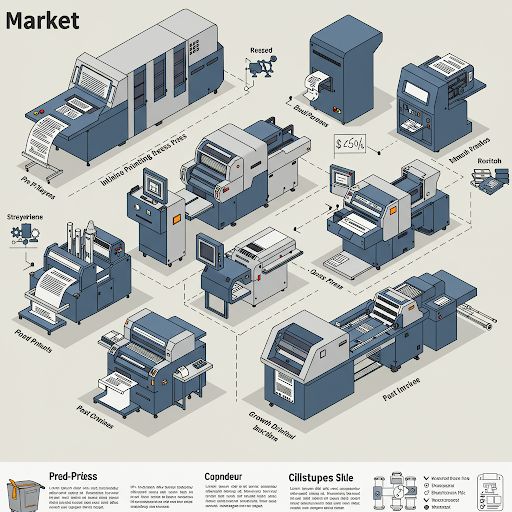INLINE PRINTING PRESS MARKET REPORT SUMMARY
The size of the global inline printing press market was anticipated to be valued at USD 0.58 billion in 2024, predicted to reach USD 0.98 billion in 2035 with a growth rate of CAGR 6.45% over the forecast period 2025 to 2035.
The market for inline printing presses involves integrated printing equipment that integrates processes such as color printing and finishing, most crucial in packaging and commercial printing for optimal efficiency in bulk production. Industry players in this market include titans such as Heidelberg, Komori, and Koenig & Bauer that spearhead technology. In order to understand today's market trends, innovations, and competitive scenario, it's recommended to look at the latest industry reports, latest news updates, and market analyses, since the printing industry is dynamic and prone to fast-changing developments in technology and market requirements.

Download FREE SAMPLE REPORT
In the constantly changing world of printing technology, the inline printing press market is experiencing a paradigm shift fueled by two trendsautomation and sustainability. With industries calling for increased efficiency and lesser environmental footprint, manufacturers are infusing sophisticated automation capabilities into inline presses, reducing processes and limiting manual interference. In addition, there is a focus on greener practices with increasing demands for eco-friendly inks, substrates, and energy-saving components. This meeting of automation and sustainability not only increases productivity but also aligns the market for inline printing presses with the international trend towards greener and intelligent solutions.
INLINE PRINTING PRESS MARKET SEGMENTATION
By Type
Depending on type inline printing press market can be categorized as less than 8 colour, 8-10 colour, and more than 10 colour.
By Application
Depending on application inline printing press market can be categorized as food & beverage packaging, medical and pharmaceutical packaging, household cleaning, and cosmetics.
RESTRAINING FACTOR
"Technological transition and workforce adaptation intricately woven factors influencing the market"
One of the multilateral challenges facing the inline printing press industry is the complex relationship between technological transformation and the upgradation of the workforce. As the sector moves towards automation, AI, and digitalization, it becomes necessary to upskill and reskill the available workforce. Yet, the integration of the skill set of the workforce to the needs of new-generation inline press technologies needs investment, time, and a holistic training system. The test is in closing the knowledge gap efficiently, thus having a proficient workforce that is capable of maximizing the potential of contemporary inline printing press systems and spearheading innovation in an increasingly dynamic environment.
KEY INDUSTRY PLAYERS
"Financial players to contribute towards the expansion of the market"
Financial players stand to be a key driver in spearheading the growth of the inline printing press market. Investment companies, venture capitalists, and private equity firms realize the industry's growth, efficiency, and sustainability potential. These players' strategic investments go beyond capital, including market expertise, business collaborations, and technology partnerships. With capital injection into research and development projects, these financial drivers enable innovation so manufacturers can create next-generation inline press technologies. Additionally, their participation brings about market consolidation, promotes mergers and acquisitions, and inspires cross-border collaborations, all of which propel the market's dynamic growth and development.
List of Leading Inline Printing Press Companies
BOBST (Switzerland)
Heidelberg (Germany)
Mark Andy (U.S.)
Nilpeter (Denmark)
PCMC (U.S.)
OMET (Italy)
Ekofa (South Korea)
KYMC (Taiwan)
MPS Systems B.V. (Netherlands)
Weifang Donghang (China)
Taiyo Kikai (Japan)

Download FREE SAMPLE REPORT
The inline printing market is segmented as below
By End-user
- Packaging
- Labels
- Textiles
- Others
By Technology
- Flexographic printing machines
- Digital printing machines
- Gravure printing machines
- Others
By Geographical Landscape
- APAC
- Europe
- North America
- South America
- Middle East and Africa

